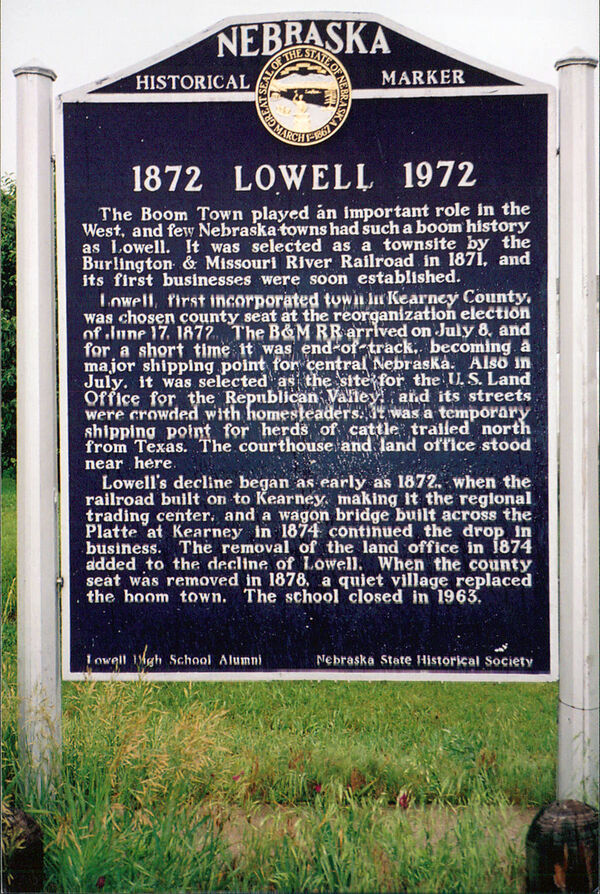Difference between revisions of "Nebraska Historical Marker: Lowell, 1872-1972"
m |
|||
| Line 4: | Line 4: | ||
3 miles south of I-80 exit 285 on Nebraska Highway 10, Kearney County, Nebraska | 3 miles south of I-80 exit 285 on Nebraska Highway 10, Kearney County, Nebraska | ||
| − | View this marker's location '''[https:// | + | View this marker's location '''[https://www.google.com/maps/place/40%C2%B038'51.0%22N+98%C2%B050'49.8%22W/@40.647514,-98.8477122,204m/data=!3m2!1e3!4b1!4m5!3m4!1s0x0:0x0!8m2!3d40.647513!4d-98.847165 40.647513, -98.847165]''' |
View a map of all Nebraska historical markers, '''[http://www.nebraskahistory.org/publish/markers/texts/index.shtml Browse Historical Marker Map]''' | View a map of all Nebraska historical markers, '''[http://www.nebraskahistory.org/publish/markers/texts/index.shtml Browse Historical Marker Map]''' | ||
Revision as of 14:19, 3 April 2017
Location
3 miles south of I-80 exit 285 on Nebraska Highway 10, Kearney County, Nebraska
View this marker's location 40.647513, -98.847165
View a map of all Nebraska historical markers, Browse Historical Marker Map
Marker Text
The Boom Town played an important role in the West, and few Nebraska towns had such a boom history as Lowell. It was selected as a townsite by the Burlington & Missouri River Railroad in 1871, and its first businesses were soon established. Lowell, first incorporated town in Kearney county, was chosen county seat at the reorganization election of June 17, 1872. The B & MRR arrived on July 8, and for a short time it was end-of-track, becoming a major shipping point for central Nebraska. Also in July, it was selected as the site for the U.S. Land Office for the Republican Valley, and its streets were crowded with homesteaders. It was a temporary shipping point for herds of cattle trailed north from Texas. The courthouse and land office stood near here. Lowell's decline began as early as 1872, when the railroad built on to Kearney, making it the regional trading center, and a wagon bridge built across the Platte at Kearney in 1874 continued the drop in business. The removal of the land office in 1874 continued the drop in business. The removal of the land office in 1874 added to decline of Lowell. When the county seat was removed in 1878, a quiet village replaced the boom town. The school closed in 1963.
Further Information
Bibliography
Marker program
See the Nebraska Historical Marker Program for more information.
